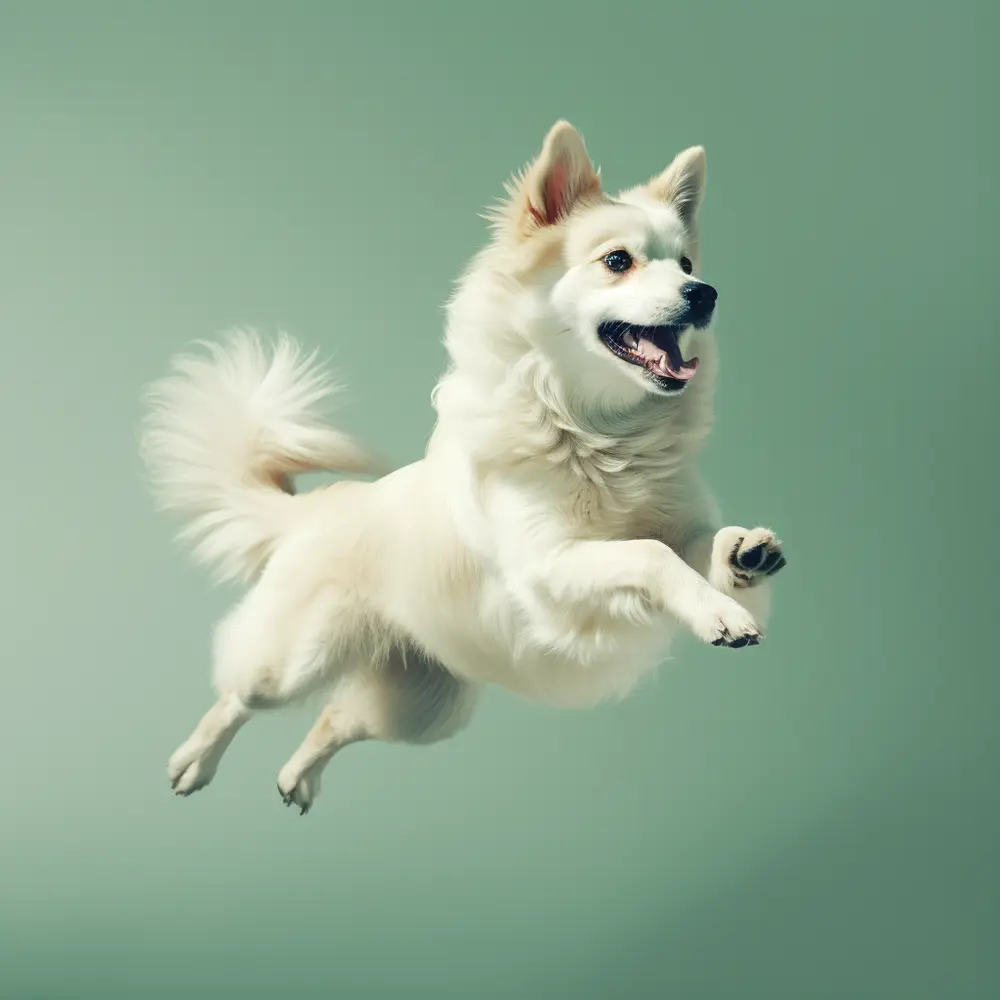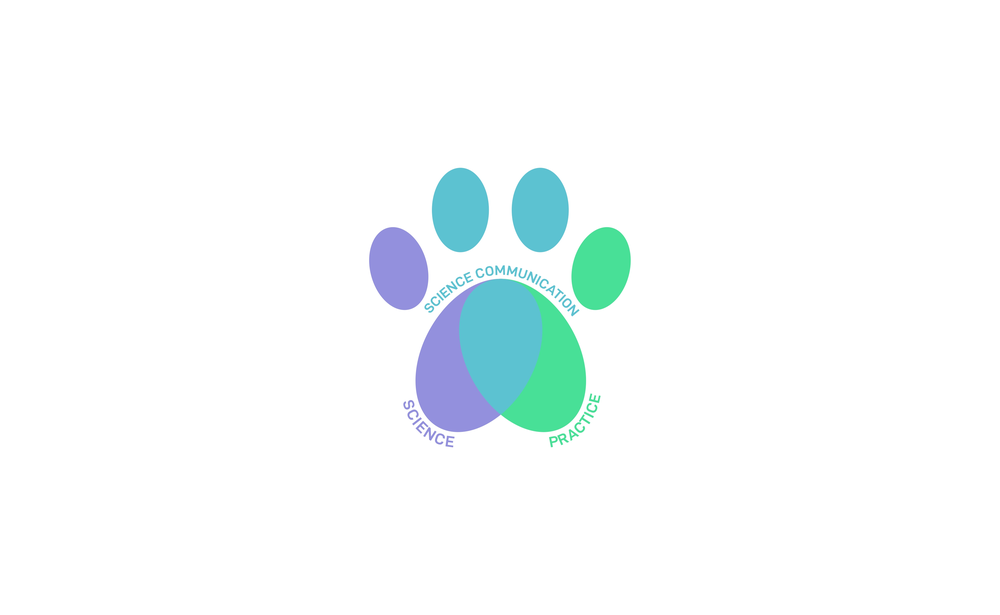Table of Contents:
Understanding Unwanted Behaviour in Dogs
Understanding unwanted behaviour in dogs is crucial for any pet parent aiming to cultivate a harmonious relationship with their canine companion. Unwanted behaviour, which can range from excessive barking to destructive chewing, often stems from a variety of sources, including anxiety, boredom, or the lack of appropriate training.
It's important to recognise that dogs do not act out of spite or malice; rather, their behaviour provides important information. They may indicate that they have unmet needs or that they are confused about what is expected of them. Addressing these behaviours effectively requires understanding their causes (if possible, and not just focusing on eliminating symptoms = the unwanted behaviours) which again requires a compassionate understanding of your dog's perspective.
Before reacting to unwanted behaviours, assess the situation carefully. Ask yourself: Is my dog getting enough exercise? Are they left alone for extended periods? Could they be in discomfort or experiencing medical issues? By identifying the underlying causes, you can take the first step towards a solution that respects both your needs and those of your dog.
Identifying the Root Causes of Problematic Actions
Identifying the root causes of unwanted behaviour in dogs is a vital step in addressing such issues constructively. Each dog is an individual, with their own set of experiences and learning history, which can influence their actions. To effectively resolve unwanted behaviour, we must dig deeper and understand the motivations behind these actions.
Start by observing your dog in different situations to pinpoint triggers. Is there a specific time of day, location, or presence of certain individuals or other animals that leads to the unwanted behaviour? Noting these patterns can reveal the triggers that you’ll need to address.
Diet and nutrition also play an important role in your dog's behaviour. Consider whether your dog's diet is properly balanced and meeting their physiological needs. Dietary imbalances or food allergies can contribute to behavior issues, often overlooked as a potential cause.
Additionally, consider your dog’s daily routine. Dogs thrive on routine and predictability. Life changes, such as moving, a new household member, or an erratic schedule, can cause stress and lead to behaviour changes. Evaluating these factors helps to identify areas that need adjustment for your dog's well-being.
The Principles of Positive Reinforcement Training
The principles of positive reinforcement training focus on rewarding desirable behaviour to encourage its recurrence. This rewarding system stands in contrast to aversive approaches, aiming to build a bond of trust rather than fear between you and your dog.
One of the core principles is the immediate recognition of the desired behaviour. So start by thinking of what is the behaviour you want to see in your dog (instead of focussing on the unwanted behaviours you don`t want to see). When your dog acts as you wish, you should promptly provide a reward. This could range from tasty treats to verbal praise or physical affection, depending on what your dog enjoys most.
Consistency is another critical element in positive reinforcement training. It's important that everyone interacting with your dog follows the same rules and reward systems to avoid confusion. Consistency helps your dog to learn more quickly and effectively.
Variety in rewards is also beneficial. Changing up the types of rewards keeps your dog interested and motivated. This can also help prevent your dog from being responsive to rewards only when they are visible.
Finally, setting achievable goals for your dog ensures progress. Start with easy tasks and gradually build up to more complex commands as your dog's training advances. Incremental steps are instrumental for maintaining your dog's confidence and enthusiasm during the training process.
So start by thinking of what is the behaviour you want to see in your dog (instead of focussing on the unwanted behaviours you don`t want to see).
Replacing Unwanted Behaviours with Wanted Behaviours: A Step-by-Step Guide
Replacing unwanted behaviours with wanted behaviours is a process that can drastically improve your dog's behaviour and your relationship with them. It requires patience, consistency, and a step-by-step approach to guide them toward the behaviours you want to see.
Begin by clearly defining the unwanted behaviour you want to change. Be specific about what action your dog is taking that you’d like to stop. Then, determine an alternative, positive behaviour to replace it. This alternative should be something that is incompatible with the unwanted behavior so your dog cannot do both at the same time.
- Identify the trigger: Determine what starts the unwanted behaviour. Is it a reaction to a particular situation or an object?
- Prepare the alternative: Choose a behaviour that can replace the unwanted one. For example, if you want to stop your dog from jumping on guests, train them to sit when someone enters the room.
- Set the stage: Create a controlled environment where you can practice the new behaviour.
- Introduce the cue: Use a specific word or action to signal to your dog what is expected of them.
- Reward promptly: The moment your dog performs the alternative behaviour, reward them immediately to reinforce the action.
- Practice regularly: Repeat training sessions consistently to help your dog learn the new behaviour.
- Gradually introduce distractions: Once your dog can perform the new behaviour in a controlled environment, slowly add distractions so they learn to maintain the behaviour regardless of the situation.
This guide is about breaking the bad habit cycle and teaching your dog a more appealing way to behave. With these steps, you’ll be able to transform unwanted behaviours into positive actions that hopefully increases the quality of life for both you and your dog.
Setting Your Dog Up for Success: The Role of the Environment
Setting your dog up for success is heavily influenced by their environment. A well-structured environment can prevent many unwanted behaviours before they start and can make training for positive behaviours much easier.
Start by dog-proofing your home. Remove temptations and safety hazards that may lead to unwanted behaviours. If your dog likes to chew shoes, for instance, keep them out of reach. This reduces the possibility of the unwanted behaviour occurring.
Next, create a dedicated space for your dog to feel secure and comfortable. Whether it's a crate, bed, or a specific room, this area should be a positive retreat for relaxation and not used as a punishment zone.
- Ensure your dog has access to appropriate toys to keep them mentally and physically stimulated. This can prevent boredom, which often leads to destructive behaviour.
- Regular exercise is key for a balanced demeanour in dogs. Adequate physical activity helps to burn excess energy that might otherwise be used for mischievous behaviour.
- Consider environmental enrichment tools such as puzzle feeders that can engage your dog's mind and curb negative behaviours stemming from boredom or excess energy.
By thoughtfully organising your dog's environment and daily routine, you can set them up to succeed in their training, ensuring they display the good behaviours you desire.
Consistency is Key: Maintaining a Routine
Developing and maintaining a routine is essential for effective dog training. Consistency in your dog’s schedule and in your responses to their behaviour helps them understand what is expected of them and when. A consistent routine provides structure, which can greatly reduce stress and confusion for your pet.
Create a daily schedule that includes fixed times for meals, walks, playtime, and training sessions. Such regularity helps regulate your dog's natural rhythms and can aid in managing their behaviour. A predictable routine reassures your dog, allowing them to feel more secure and relaxed.
Being consistent in training means always responding in the same way to the same behaviours, e.g. rewarding the same behaviours and responding the same unwanted behaviours. Avoid sending mixed messages that could hinder your dog's learning. For instance, if jumping is not allowed, it should always be not allowed, regardless of the situation.
- Communicate clearly and always use the same cue for a behaviour you are trying to teach.
- Involve all family members in the training process to ensure everyone is reinforcing the same rules and routines.
- Keep training sessions brief and focused to avoid overwhelming your dog and to keep their attention on the task at hand.
A consistent routine and training approach will not only help in correcting unwanted behaviour but will also promote a stronger bond between you and your dog. It forms the foundation of trust and understanding which is necessary for a well-adjusted and happy canine companion.
The Importance of Patience and Timing
The success of addressing unwanted behaviour in dogs is greatly impacted by the patience of the owner and the timing of their responses. A patient attitude is crucial because behaviour change does not happen overnight. Each dog learns at their own pace, and showing frustration or impatience can set back training progress.
Timing is equally significant, especially when it comes to responding to a behaviour. Dogs learn from immediate consequences. Timing your reactions to your dog`s responses within seconds of the behaviour ensures that your dog makes the correct association.
For example, if you're teaching your dog not to jump on people, you must reward them for keeping all four paws on the ground immediately when they greet someone.
- Use consistent signals or cues to communicate with your dog, so they quickly learn to associate these with desired actions.
- Always reward or correct your dog in a consistent manner to reinforce the learning process.
- Stay calm and controlled, regardless of whether you’re praising or correcting. This helps prevent your dog from becoming anxious or excited, which can impede learning.
Developing patience and perfecting the timing of your responses will help you communicate more effectively with your dog, creating a more conducive learning environment and strengthening the bond between you both.
When to Seek Professional Help: Consulting a Dog Trainer or Veterinary Behaviourist
While many unwanted behaviours can be addressed through consistent and patient home training, there are situations where seeking professional help is advisable. A trained canine behaviourist can offer guidance and support that go beyond what you can achieve on your own.
Consider consulting a professional if your dog's behaviour is not improving despite your best efforts or if the unwanted behaviour is severe, such as aggression or extreme anxiety. These types of issues can be deeply rooted in a dog's mental state and may require specialised intervention.
A professional can conduct a thorough evaluation of your dog to identify underlying issues that may be contributing to the unwanted behaviour. They can then develop a tailored behaviour modification plan and help you implement it effectively.
- Look for a qualified professional with accreditation in canine behaviour. This ensures they use up-to-date, science-based methods.
- Don't delay in seeking help if you are concerned about safety or if the behaviour disrupts your household. Early intervention can prevent problems from becoming more severe.
- Be prepared to be an active participant in the process. A professional can guide you, but success also depends on your commitment to follow through with their recommendations.
Finding the right help can make a significant difference in improving unwanted behaviours, offering peace of mind to you and a better quality of life for your dog.
Celebrating Progress: Recognising and Rewarding Good Behavior
Celebrating progress by recognising and rewarding good behaviour is a cornerstone in positive reinforcement training for dogs. Acknowledging your dog's successes, no matter how small encourages them to repeat those behaviours and helps them understand what actions earn your approval.
Keep an eye out for moments when your dog demonstrates good behaviour, especially if it’s in place of behaviour you’re working to change. These moments are golden opportunities for reinforcement. A treat, a favourite game, or enthusiastic praise can all serve as effective rewards.
It's also important to celebrate the milestones in your dog's learning journey. Reflect on where you started and acknowledge the progress made. This not only reinforces behaviour but builds confidence in your dog, which in itself can reduce the likelihood of unwanted behaviours.
- Use positive verbal cues such as "Good dog!" or "Yes!" to communicate approval instantly.
- Be genuine with your praise. Dogs are adept at reading your tone and body language, and sincere recognition will have a stronger impact.
- Share the success with your dog. Let them see your excitement about their progress, which can serve as an emotional reward in addition to treats or play.
By consistently recognising and rewarding good behaviour, you reinforce the bond with your dog and encourage a pattern of positive behaviour for a harmonious and happy companionship.
Preventing Unwanted Behavior: Proactive Measures for Dog Owners
Proactive measures are paramount in preventing unwanted behaviour in dogs before it becomes a habit. By setting clear boundaries and providing the right training from the start, you can minimize the likelihood of issues arising.
Begin with socialization at an early age to expose your dog to various people, animals, and environments. Positive experiences during this crucial period can reduce fear and aggression, which are common roots of unwanted behaviours.
Training should begin as soon as you bring your dog home. Early training establishes a foundation for good behaviour and can preempt the development of negative habits.
- Teach basic commands like 'sit', 'stay', 'come', and 'leave it'. These signals not only improve communication but can also interrupt potential unwanted behaviours before they escalate.
- Focus on training them a safe haven to give your dog a safe space where they can retreat, helping prevent separation anxiety and destructive behaviours when left alone.
- Provide structured play and exercise to channel your dog's energy towards positive outlets. Dogs with sufficient physical and mental stimulation are less likely to develop unwanted behaviours driven by boredom or too much energy.
Incorporating these proactive measures into your routine can greatly diminish the chances of unwanted behaviour, leading to a more fulfilling and stress-free relationship with your dog.
Conclusion: Building a Lasting Bond Through Positive Training Methods
In conclusion, building a lasting bond with your dog through positive training methods is a rewarding journey for both the dog and the owner. It's a process that prioritizes mutual respect and understanding, leading to a harmonious relationship. The time and effort invested in using these methods are not just about changing unwanted behaviour and replacing it by wanted behaviour, but also about fostering a deep connection with your canine friend.
Embracing the principles of positive reinforcement, being consistent with routines, demonstrating patience, and celebrating your dog's progress, all contribute to a strong foundation of trust. This trust not only makes training more effective but also enhances the overall well-being of your dog.
Remember that each dog is unique and what works for one may not work for another. Flexibility in your approach, guided by the core principles of positive training, will help you and your dog overcome challenges. It's through understanding, patience, and kindness that unwanted behaviour can be most effectively addressed, paving the way for a lasting and loving bond.
FAQ: Managing Your Dog's Behavior Positively
What are the first steps in addressing unwanted dog behavior?
To address unwanted behavior in dogs, start by identifying the root causes of the behavior. Observe your dog to pinpoint triggers and reflect on their daily routine, diet, and environment. Ensuring your dog gets enough exercise, mental stimulation, and understanding their communication can lay the foundation for successful behavior management.
How does positive reinforcement work in dog training?
Positive reinforcement involves rewarding your dog's desirable behavior to encourage its recurrence. Use immediate rewards such as treats, praise, or affection after your dog exhibits a good behavior. This method helps build trust and communication between you and your dog.
Can replacing a bad habit with a good one change my dog's behavior?
Yes, replacing a bad habit with a good one is an effective approach to changing unwanted behavior. Define the unwanted behavior, identify triggers, and introduce a positive behavior that can replace the unwanted one. Consistent practice and rewards when your dog performs the new behavior can lead to lasting changes.
Why is a consistent routine important in dog training?
A consistent routine provides your dog with structure and predictability, which can reduce their stress and confusion. It also helps them understand what is expected of them and when, making it easier for them to learn and follow the rules you set in their training.
When should I seek professional help for my dog's behavior issues?
You should seek professional help if your dog's behavior is not improving with your efforts or if they display severe issues such as aggression or extreme anxiety. A professional dog behaviorist can provide personalized guidance and support to effectively address complex behavioral problems.








